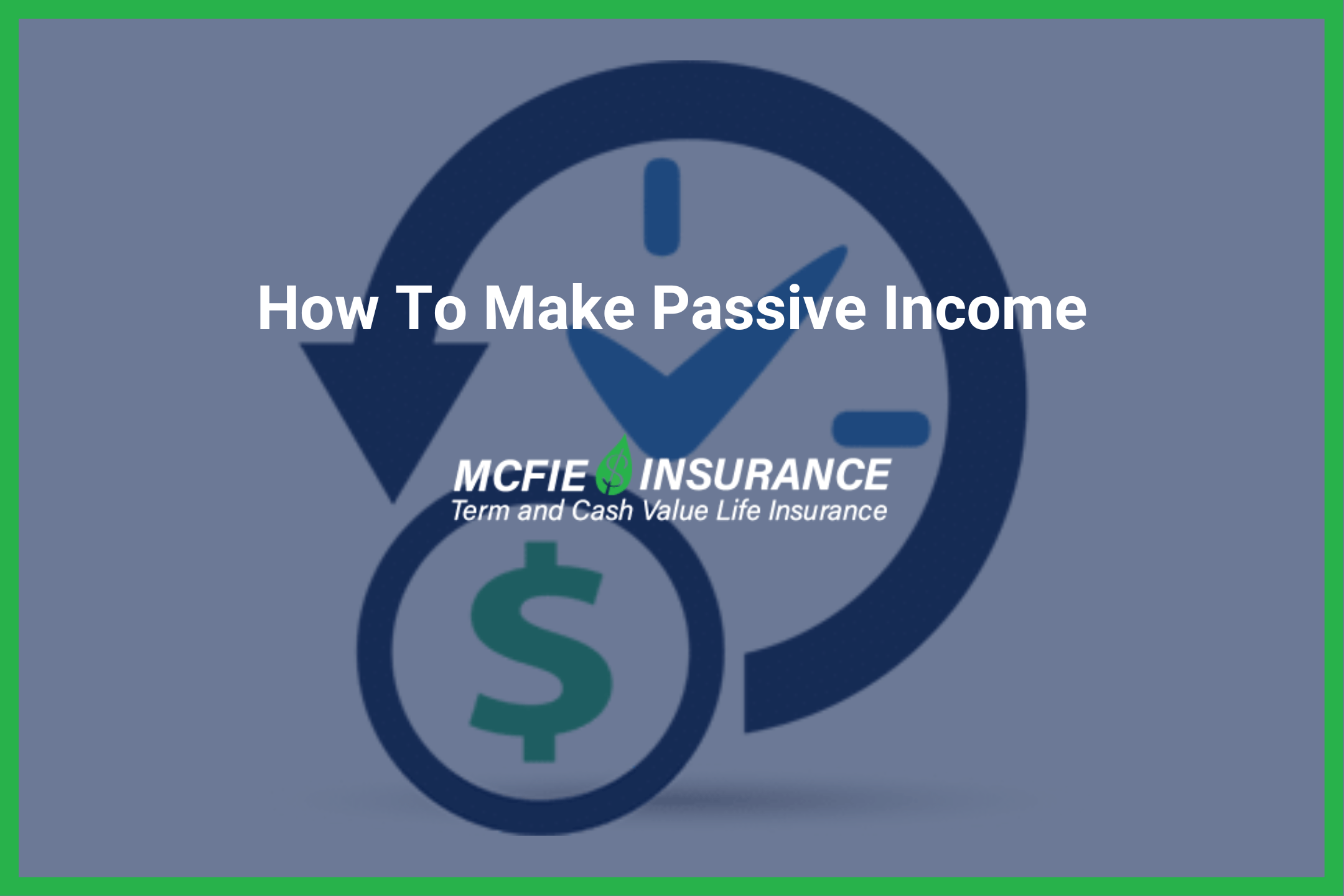702-660-7000
702-660-7000

Passive income stands as a crucial strategy in wealth accumulation and retirement planning. It operates as a means to generate earnings with minimal effort, akin to accruing wealth while asleep. Although numerous passive income ideas abound, not all prove equally effective for everyone. Much like finding a well-fitting pair of shoes, discovering the optimal passive income method requires exploration and experimentation. What suits one individual may not necessarily benefit another. Therefore, it’s imperative to delve into various options to pinpoint the most suitable fit for individual circumstances and financial goals.
Passive income refers to earnings generated with minimal ongoing effort. It’s akin to a continuous stream of income that requires little active involvement once set up. This contrasts with active income, which demands consistent work and effort, such as from a job or side hustles. Examples of passive income sources include investments like annuities, bonds, or stocks that pay dividends. Unlike active income, where you exchange time and effort for money, passive income allows you to establish systems that generate revenue autonomously. In essence, passive income enables you to earn money while you focus on other pursuits or simply relax.
 57-page slide deck
57-page slide deckMany people are losing money with typical financial planning. Even people who were "set for life" are running out of money in retirement. Here's an easy guide with 3 things you can do to become wealthier.
Download here>
Here are some passive income ideas that might just make your dreams a reality:
1. Content
Let’s delve into the realm of passive income through content creation. Imagine leveraging platforms like Google, YouTube, Instagram, Snapchat, TikTok, and more to transform your creative endeavors into a lucrative venture. The possibilities are endless! Here are some avenues through which you can harness the power of content creation for passive income:
While these passive income avenues may seem like a dream come true, they do entail initial groundwork. However, with determination and perseverance, you can pave your way to earning money while you sleep. So, what’s holding you back? Seize the opportunity and embark on your journey to passive income success today!
2. Dividend Stocks:
Imagine dipping your toes into the world of stocks, but not just any stocks – we’re talking about dividend stocks. When you invest in dividend stocks, you become a shareholder of a company, and in return, they dish out a portion of their profits to you regularly. It’s like getting a slice of the pie without having to lift a finger! Dividend stocks have been around forever, and they’re hailed as the original of passive income investments. Why? Because they offer a steady stream of income without much hassle. Sure, you’ll need to invest some cash upfront, but once you’re in, it’s smooth sailing from there. Now, some people claim dividend stocks are less risky than those flashy growth stocks, but let’s face it – every investment comes with its own set of risks. While dividend stocks might not guarantee overnight riches, they’re definitely a solid option for anyone looking to beef up their passive income game. So, if you’re keen on building that passive income stream, dividend stocks are definitely worth a second look.
3. Dividend Index Funds & Exchange Traded Funds
Investors seeking to optimize their passive income strategy may find dividend index funds and exchange-traded funds (ETFs) to be highly advantageous vehicles. These investment instruments offer a diversified approach compared to the individual selection of dividend stocks. Essentially, they represent a curated portfolio of dividend-paying companies, providing investors with exposure to a broad range of sectors and industries. By investing in dividend index funds and ETFs, investors can enjoy the benefits of passive income generation without the need for extensive research and stock picking.
One of the primary advantages of dividend index funds and ETFs lies in their ability to reduce risk through diversification. By spreading investments across multiple companies, these funds offer a more stable and resilient investment strategy compared to relying on individual stocks. Moreover, they provide investors with access to dividend income from a variety of sources, enhancing the consistency and reliability of passive income streams.
Another compelling aspect of dividend index funds and ETFs is their accessibility. Investors of all levels, from seasoned professionals to newcomers, can participate in these funds with ease. Whether one seeks to allocate significant capital or simply initiate a modest investment, dividend index funds and ETFs offer scalability to accommodate diverse investment objectives.
Dividend index funds and ETFs represent a sophisticated yet accessible avenue for investors seeking to enhance their passive income portfolios. With their diversified approach, risk mitigation capabilities, and broad accessibility, these investment vehicles serve as valuable tools for optimizing passive income generation strategies.
4. Bonds
Now let’s talk about the realm of bonds versus stocks – two key players in the world of investing. Bonds operate much like loaning money to entities, whether they’re corporations or government institutions. In return for your investment, these entities promise to repay you with added interest. It’s akin to assuming the role of a lender, minus the paperwork hassles. Bonds often receive praise for their reliability and stability, earning them a reputation as the safe bet in investment circles.
On the flip side, we have stocks, which present a different investment landscape. While stocks may carry higher risk levels, they also boast the potential for substantial returns. Think of it as comparing a serene savings account to the exhilarating thrill of a rollercoaster ride at a theme park – each offering its own unique advantages and risks.
Before diving into either option, it’s essential to craft a solid investment strategy. Consider factors such as your risk tolerance, financial goals, and desired returns. After all, successful investing is all about striking the right balance between safety and profit. So, take the time to evaluate your options carefully and make informed decisions that align with your financial aspirations.
5. CD Ladders Or High-Yield CDs/Savings Accounts
If you prefer a conservative approach to investing, consider exploring CD ladders, high-yield CDs, or high-interest savings accounts. These options provide a sense of security akin to cozy blankets in the investing realm. While they may not yield rapid wealth accumulation, they offer a stable environment for your finances.
CD ladders involve distributing your funds across various certificates of deposit with staggered maturity dates. This strategy ensures a steady influx of cash as each CD reaches maturity. High-yield CDs and savings accounts, on the other hand, offer slightly higher interest rates compared to traditional savings accounts, adding a modest boost to your returns. While the potential returns may not be staggering, they appeal to individuals seeking a cautious, low-risk approach to passive income generation.
For those inclined toward risk aversion, these passive income options serve as reliable alternatives, providing peace of mind and stability in uncertain financial landscapes.

Understanding the Infinite Banking Concept and How It Works In Our Modern Environment 31-page eBook from McFie Insurance Order here>
6. Useful Household Item Renting
Have you ever considered renting out your belongings? We’re talking about those items tucked away in your garage or attic – lawnmowers, tents, power tools, you name it. Believe it or not, there’s a demand for these items among individuals who require them temporarily but prefer not to invest in purchasing them outright. This presents an opportunity for you to capitalize on unused assets.
By renting out your belongings, you’re essentially converting clutter into revenue. However, it’s important to note that while this endeavor can generate passive income, it also entails some degree of commitment. This includes tasks such as managing rentals, ensuring items are well-maintained, and occasionally addressing repairs or replacements. Yet, with a willingness to invest initial effort, renting out your gear can evolve into a lucrative side hustle.
Picture this: your lawnmower quietly earns money for you while you unwind on the porch with a refreshing beverage. It’s a win-win scenario that maximizes the utility of your possessions while generating additional income. So, if you’re prepared to dedicate time and energy upfront, renting out your gear could serve as a rewarding supplementary source of revenue.
7. Real Estate Investment Trusts
Introducing your new ally in the realm of passive income-Real Estate Investment Trusts, or REITs for short. Let’s dive into the details: REITs serve as a unique avenue for individuals to invest in real estate assets without the burden of property ownership. Intriguing, isn’t it? Here’s how it operates: REITs pool capital from investors, such as yourself and me, and proceed to acquire a diverse array of real estate assets. Picture office buildings, retail spaces, residential apartments, and even luxurious hotels – REITs have their hands in it all. The cherry on top? They distribute a portion of the profits generated from these assets to investors in the form of dividends.
By investing in REITs, individuals can enjoy the benefits of real estate ownership without the responsibilities typically associated with being a landlord or managing tenants. Moreover, REITs are seamlessly integrated into the stock market, allowing investors to buy and sell them with the same ease as regular stocks. It’s akin to relishing a delicious cake while simultaneously having it available for future indulgence.
For those harboring aspirations of delving into real estate investment without the associated complexities, REITs offer a compelling solution. They serve as a gateway to passive income paradise, enabling investors to partake in the lucrative world of real estate without the hassle of direct property management.
8. Rental Properties
If you’re prepared to make a substantial investment and dive headfirst into the realm of real estate, acquiring a rental property might just be your ticket to passive income bliss. However, before you take the plunge, it’s crucial to understand that success in this arena requires meticulous planning and diligent execution. Let’s break down what it takes to transform your rental property into a passive income powerhouse.
First and foremost, crafting a comprehensive game plan is essential. This entails conducting thorough research, analyzing financial projections, and pinpointing the optimal location for your investment. After all, the attractiveness of your rental property hinges on its accessibility and appeal to potential tenants.
Once you’ve secured the perfect property, the next step is to secure reliable tenants. Ensuring a smooth and hassle-free rental experience necessitates the selection of trustworthy individuals who will uphold their end of the rental agreement. The nightmare of dealing with problematic tenants can swiftly erode the allure of passive income.
Lastly, maintaining your rental property and staying on top of financial obligations are paramount. Regular upkeep, timely bill payments, and adherence to tax obligations are indispensable components of successful property management. Neglecting these aspects can swiftly derail your passive income aspirations.
While rental properties present a lucrative opportunity for passive income generation, it’s important to recognize that they require dedication and perseverance. With meticulous planning and a willingness to roll up your sleeves, you can position yourself for financial success while your rental property takes on the heavy lifting.
9. Annuities
How do annuities work? You entrust a lump sum of money to an insurance company, and in return, they pledge to furnish you with a consistent stream of income, akin to a reliable money fountain. Now, when it comes to annuities, there’s a smorgasbord of options to explore, including fixed guaranteed, variable, and indexed annuities. Each variant boasts its own set of advantages and idiosyncrasies, underscoring the importance of thorough research before taking the plunge.
Now, here’s the crux: with fixed guaranteed annuities, you’re essentially securing an ironclad assurance that your cash flow will never dwindle. It’s akin to being enveloped in a financial security blanket, providing perpetual warmth and comfort. While it does require an upfront investment, many contend that it represents one of the safest avenues for passive income.
So, if you’re in search of a hassle-free method to bolster your financial reserves, annuities may emerge as your trusted ally.
10. Life Insurance
There is a gem that is often overlooked in the realm of passive income strategies-whole life insurance. Now, I understand if you’re scratching your head at the mention of life insurance and passive income in the same breath, but bear with me, because this concept might just revolutionize your financial outlook.
Imagine securing a meticulously crafted participating whole life insurance policy. Here’s where the magic unfolds: as time progresses, the cash value of this policy accrues, akin to a clandestine savings account that flourishes autonomously. Now, brace yourself for the revelation: once this cash value reaches a substantial threshold, you have the liberty to commence withdrawing it as passive income. It’s akin to possessing a personal piggy bank that not only stores your wealth but also rewards you for accessing it!
You also have the option to channel this accumulated cash value into an annuity in the future, ensuring a consistent stream of income to support you throughout your retirement years. It’s akin to possessing a golden parachute to safeguard your retirement nest egg from unforeseen financial turbulence.
And here’s an added nugget of wisdom: you can leverage life insurance to “cover” other income-generating assets, such as annuities or a 401(k). This strategic maneuver fortifies your financial portfolio, adding an extra layer of security against market fluctuations.
So, if you’re in pursuit of a cunning yet effective strategy to elevate your passive income endeavors, participating whole life insurance may very well serve as your golden ticket to financial prosperity.
When it comes to managing your passive income streams, navigating Uncle Sam’s tax obligations demands strategic foresight. Fortunately, retirement plans like Roth IRAs and 401(k)s emerge as formidable allies in this endeavor.
Channeling your passive income earnings into these retirement vehicles yields instant tax advantages, akin to bestowing yourself with a monetary bonus come tax season. However, it’s imperative to tread cautiously, as both Roth IRAs and 401(k)s impose their own set of regulations and restrictions. These include annual contribution ceilings and penalties for premature withdrawals before reaching a specified age threshold. Talk about throwing a wrench into the works, right?
But don’t worry, for there’s a great weapon within your financial arsenal-whole life insurance. Yes, you heard that correctly. A meticulously crafted whole life policy extends unparalleled flexibility and versatility concerning your financial assets. It’s akin to wielding a Swiss army knife for your finances, equipped to tackle any curveballs life throws your way.
While retirement plans like Roth IRAs and 401(k)s offer undeniable tax-saving benefits, it would be remiss to overlook the advantages afforded by a comprehensive whole life insurance policy. It could very well serve as the gateway to unlocking a realm of financial autonomy and adaptability.
Let’s delve into a savvy strategy known as “covering assets” with life insurance—a safeguard for your financial plans. Imagine you’ve invested in an annuity, generating steady passive income. Yet, lurking in the back of your mind is the unsettling thought—what if you meet an untimely demise before reaping the full benefits? Fear not, for life insurance steps in as your knight in shining armor! In the event of an early departure, the death benefit from your life insurance policy swoops in to replace the value of the assets allocated to purchase the annuity. It’s similar to having a contingency plan for your contingency plan!
But hold on, there’s more to this tale. Life insurance serves not only as a safety net for unforeseen circumstances but also as your shield against the erratic twists and turns of market volatility. Picture those tumultuous roller coaster rides in the stock market inducing queasiness. Armed with life insurance cash values, you possess a resilient buffer to weather market downturns or the onset of inflation. It’s akin to summoning a financial superhero to rescue you from turbulent times.
So, whether your concerns revolve around safeguarding your loved ones’ financial future or seeking tranquility amidst market unpredictability, life insurance emerges as a formidable asset in your passive income strategy toolkit.
If safeguarding your hard-earned passive income and securing your financial future are top priorities for you, then look no further. At McFie Insurance, we specialize in tailoring life insurance plans that provide unparalleled protection, allowing you to preserve more of the wealth you’ve diligently accumulated. Our mission? To furnish you with the assurance needed to nurture your prosperity and dictate life on your terms.
If you’re poised to elevate your passive income strategy to new heights and are keen to explore how life insurance can fortify your financial trajectory, we’re here to guide you every step of the way. Don’t hesitate to schedule a strategy session with us. Together, we’ll ensure that your financial resources remain safeguarded and resilient against any curveballs life may throw your way. Don’t delay—book your session today, and let’s start on the journey toward securing your financial peace of mind!
 by John T. McFie
by John T. McFie
I am a licensed life insurance agent, and co-host of the Wealth Talks podcast.
At age 14 I started developing spreadsheet models and software systems to help my Dad share financial concepts with clients.
Skipped college at 17 recognizing the overinflated value and prices of most college degrees and built more financial software instead (see MoneyTools.net). Still a strong advocate of higher education without going to college. I enjoy making financial strategies clear and working through the numbers to prove results you can count upon.